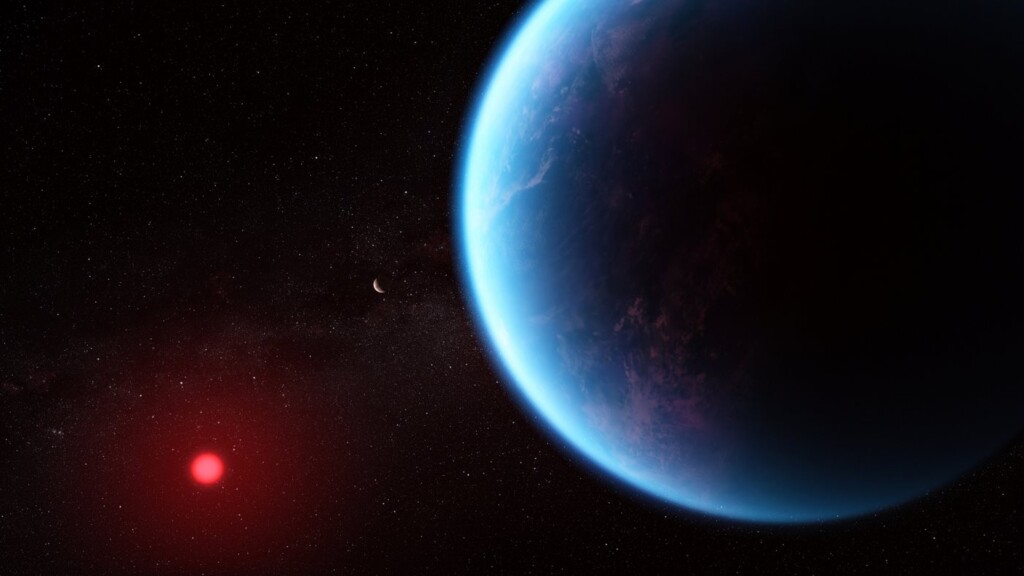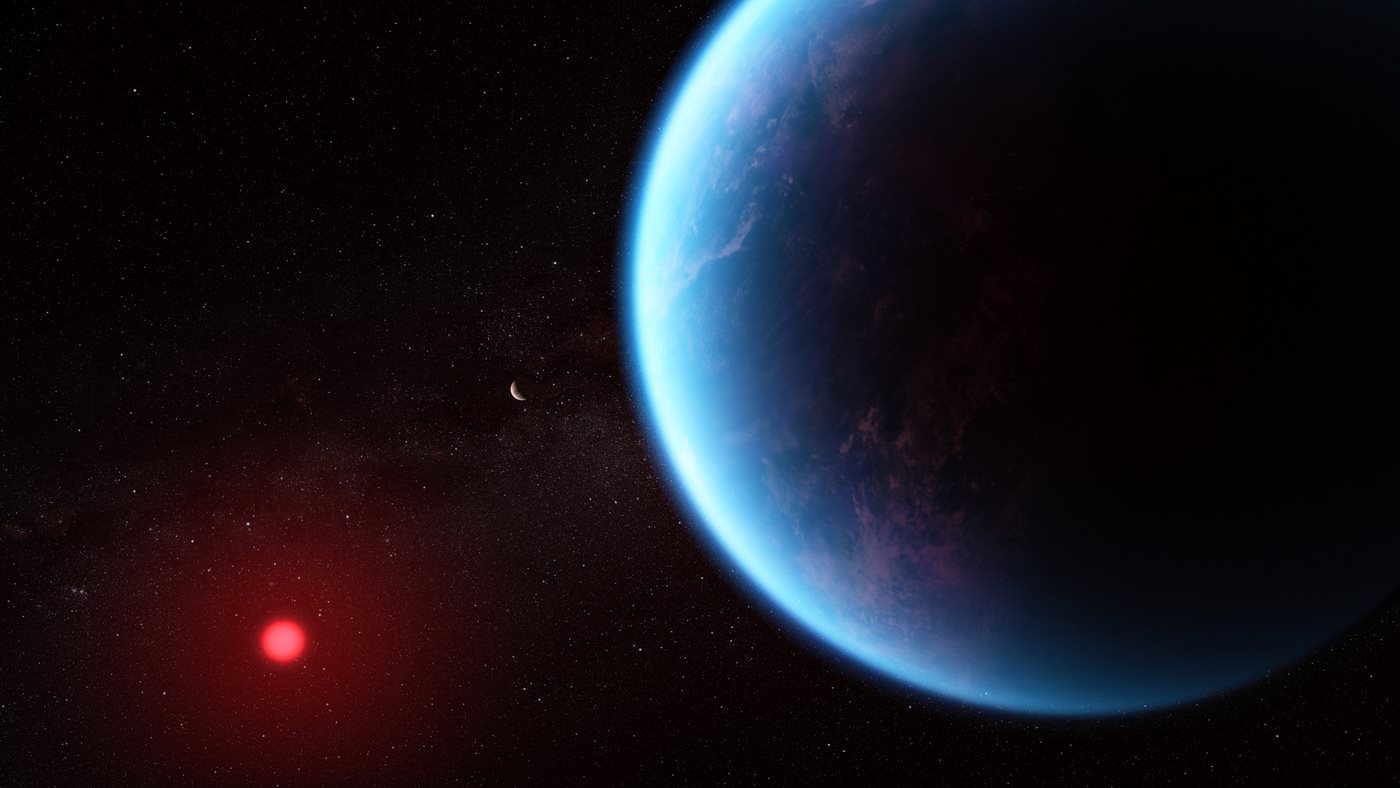
Earlier this month operators at Webb identified a planet that may contain both a protective atmosphere and a surface covered entirely in oceans—also known as a Hycean world.
One of the main functions of the James Webb Space Telescope is to advance the search for life in the universe by being able to study exoplanets as no other observatory can, and using Webb’s spectrographs, scientists were able to determine that this Hycean world is the perfect place to search.
K2-18b lies 120 light years away from Earth in the constellation Leo, where it orbits the habitable zone of a red dwarf star called K2-18. Believed to be 8.6 times larger than Earth, the abundance of methane and carbon dioxide, and shortage of ammonia detected on the planet supports the hypothesis that there may be a water ocean underneath a hydrogen-rich atmosphere.
Life emerged under such conditions on Earth, and finding them elsewhere is our best bet to determining if we are not alone in the galaxy.
Promisingly, these initial Webb observations also provided a possible detection of a molecule called dimethyl sulfide (DMS). On Earth, this is only produced by life. The bulk of the DMS in Earth’s atmosphere is emitted from phytoplankton in marine environments.
The DMS finding needs to be further validated, say the researchers, who add that because of the light and glare of the host star, it’s extremely difficult to get detailed observations of an exoplanet.
The method used involves waiting until the orbit of the planet around the star takes it between the star and the telescope. The corresponding eclipse signifies the planet is there to be seen, and when it is, Webb can use its NIRISS (Near-Infrared Imager and Slitless Spectrograph) and NIRSpec (Near-Infrared Spectrograph) instruments to image the planet and determine within the wavelengths of light and color which molecules are there on the planet.
However with such a short window of opportunity, even Webb’s exceptional power remains limited.
MORE INTERESTING SCIENCE: On Distant Planets that Don’t Rotate, Life May Exist Under Skies of Permanent Dawn and Dusk
“This result was only possible because of the extended wavelength range and unprecedented sensitivity of Webb, which enabled robust detection of spectral features with just two transits,” said Nikku Madhusudhan, an astronomer at the University of Cambridge and lead author of the paper.
“For comparison, one transit observation with Webb provided comparable precision to eight observations with Hubble conducted over a few years and in a relatively narrow wavelength range.”
OTHER EXOPLANETS: NASA Detects Carbon Dioxide–the Building Block of Life–in Exoplanet’s Atmosphere for First Time
The planet is classified as a “sub-Neptune” meaning one which shares its characteristics but that is smaller than our neighbor. Such planets are believed in some circles to be the most common type of rocky exoplanet.
Analyses from other sub-Neptunes however have shown that they often preclude the possibility to host life, at least as we know it. Their mantles of high-pressure ice and thin atmospheres have almost always led to the ocean either being too hot or simply an ocean of water vapor.
Make A SPLASH On Social Media With This News Of An Ocean World…




















